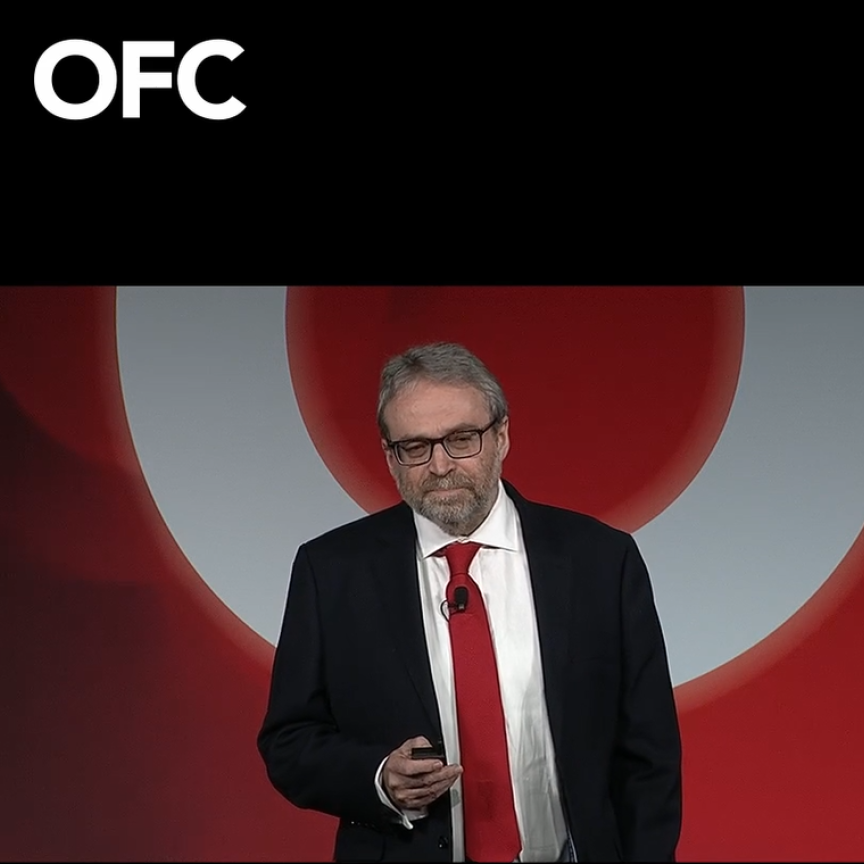OIF hosted its largest demonstration of interoperable optical networking solutions to date at the recent OFC.
It saw nearly 30 participating member companies demonstrating interoperability across 400ZR optics; co-packaging architectures; common electrical I/O (CEI) channels; common management interface Specification (CMIS) implementations and FlexE (Flex Ethernet) definitions.
Participating companies include Accton; Alphawave IP; Amphenol; Applied Optoelectonics; Broadcom; Ciena; Cisco; EXFO; Fujitsu Optical Components; Innolume; Intel; Juniper Networks; Keysight Technologies; Lumentum; MACOM; Marvell; MaxLinear; Molex; MultiLane; NEC Corporation; NeoPhotonics; Nokia; O-Net Communications; Ragile Networks; Senko Advanced Components; Sumitomo Electric Industries; TE Connectivity; Viavi Solutions and Wilder Technologies.
Mike Klempa, Amphenol, and OIF Physical and Link Layer Interoperability Working Group chair said: ‘With demonstrations in five critical technology areas enabling the networks of today and the future, the OIF booth at OFC will showcase the intersection of innovation, interoperability and implementations.’
400ZR Demo: OIF’s 400ZR project aimed to facilitate the reduction of cost and complexity for high-bandwidth data centre interconnects and promoting interoperability among optical module manufacturers. The demo consists of a full implementation of 400GE across an 80km, DWDM ecosystem using multiple module, router, open line systems, and test equipment vendors, demonstrating the project achieved its interoperability goals.
Co-packaging architectures demo: While individual companies consider options to optimise power and density, OIF has seen the need to lead industry standardisation discussions for the architecture known as co-packaging that promises to address both power consumption trends and increased bandwidth density. A variety of interoperable components that enable co-packaging was shown, along with a system implementation.
CEI-112G demo: The CEI-112G demonstrations in the OIF booth featured multi-party silicon supplier interoperability over various channels including mated compliance boards, PCB channels and direct attach copper cable channels, and even fibre. Each configuration demonstrates the technical viability of 112Gb/s operation, along with multiple industry form factors, including OSFP and QSFP-DD. The demo also showed a measured far-end eye diagram on an oscilloscope with analysis to show an example of the silicon signal integrity that is typically required going through the large variety of channels on display.
CMIS implementations demo: CMIS provides a well-defined mechanism to initialise and manage optical and copper modules in a standard way, while still providing the capability to provide custom functionality. This commonality makes integration into different host platforms easier for both the host vendor and the module vendor. The CMIS demo consisted of four separate demonstrations that showed how modules can be managed and initialised, how modules can support multiple independent services (breakout) and how module firmware can be easily upgraded.
FlexE demo: The demo showed off FlexE’s channelization features, which allow standard Ethernet optics to be broken down into multiple clients of both standard and non-standard Ethernet rates with a granularity of 5Gb/s. Realistic multi-vendor deployment scenarios will show standard 100GbE interfaces channelized into clients of mixed rates, mapping of traffic from standard Ethernet ports, and end-to-end bit error rate tester (BERT) features demonstrating error and alarm monitoring.


